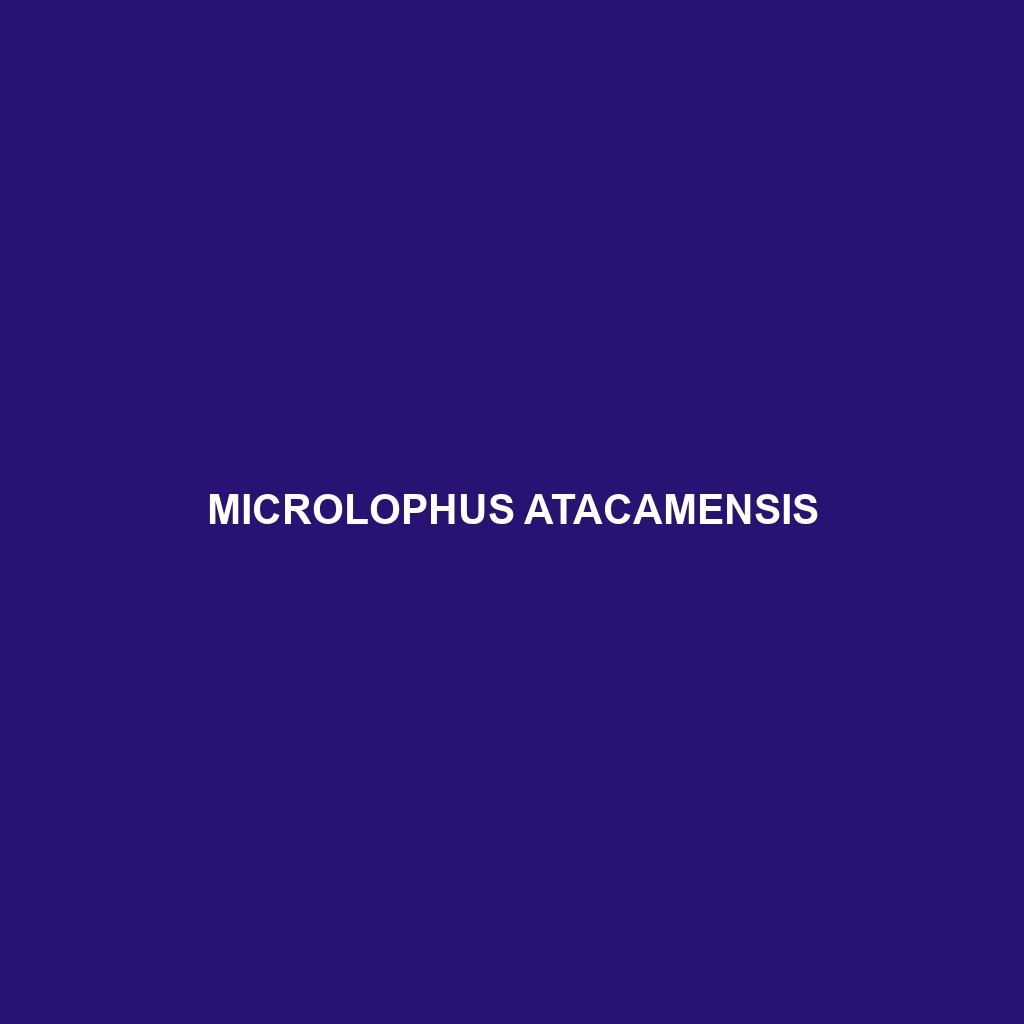Common Name
Microlophus atacamensis
Scientific Name
Microlophus atacamensis
Habitat
Microlophus atacamensis, commonly known as the Atacama lava lizard, is primarily found in the arid and semi-arid regions of northern Chile, particularly along the coastal areas of the Atacama Desert. This unique environment consists of a combination of rocky substrates, sparse vegetation, and coastal cliffs, where the lizard can be commonly observed basking in the sun. The Atacama Desert is recognized as one of the driest deserts in the world, characterized by minimal rainfall and high temperatures during the day, which creates a distinctive landscape that is crucial for the survival of Microlophus atacamensis. The lizard thrives in these harsh climatic conditions, making it well-adapted to life in a desert habitat that includes elements of marine environments along the coast.
Physical Characteristics
The Atacama lava lizard is relatively small, with adults measuring approximately 10 to 15 centimeters in length. This species exhibits a slender body with a long tail that can often exceed the length of the body. The most distinctive feature of Microlophus atacamensis is its coloration, which typically consists of a combination of grayish-brown with darker spotting that provides excellent camouflage against the rocky terrain. Males often display brighter colors, featuring red or orange hues during the breeding season, which are pivotal for attracting mates. Their limbs are well-developed, allowing for agile movements across the rocky substrate, facilitating both escape from predators and hunting for prey.
Behavior
Microlophus atacamensis is primarily diurnal, exhibiting active behavior during the daylight hours. One of the noteworthy behaviors of this species includes its territorial displays, particularly among males, who engage in head-bobbing and push-up displays to assert dominance and attract females. During the mating season, males can be observed displaying vibrant colors to entice potential mates. These lizards are excellent climbers, often found basking on rocks or shrubs where they can regulate their body temperature through sun exposure. Additionally, Microlophus atacamensis also displays unique burrowing behaviors, where they create shallow burrows that provide shelter from both predators and extreme weather conditions.
Diet
Microlophus atacamensis primarily feeds on a diet consisting of insects and arthropods, making it an insectivore. Common prey items include ants, beetles, and various small invertebrates that inhabit the arid soil and vegetation. The lizard has developed a foraging behavior that involves active searching and quick darting motions to catch its prey, utilizing its agility to navigate through the rocky terrain. This species plays an integral role in controlling insect populations within its habitat, which is essential for the overall health of the ecosystem.
Reproduction
The reproductive cycle of Microlophus atacamensis typically occurs during the warmer months when food availability is higher. Mating usually takes place between September and November, followed by a gestation period of approximately 30 to 60 days. Females lay clutches of 2 to 9 eggs in sandy or loose soil, which they bury for protection. Once the eggs hatch, the young lizards are independent and receive no parental care. This reproductive strategy enhances survival rates of the offspring in the challenging desert ecosystem where resources are limited.
Conservation Status
The conservation status of Microlophus atacamensis is currently classified as Least Concern according to the IUCN Red List. While this species is not facing immediate threats, habitat destruction due to urbanization and agricultural expansion poses potential risks. Conservation efforts are focused on habitat protection to ensure the sustainability of the species. Continued monitoring and research are essential to mitigate any future threats.
Interesting Facts
Despite its small size, Microlophus atacamensis has some remarkable adaptations that aid in its survival. Notably, this lizard can change its color slightly in response to changes in temperature and light, enhancing its camouflage abilities. Another interesting behavior seen in this species is their unique communication style, where they use visual signals and body postures rather than vocalizations to communicate with other lizards, making them fascinating subjects for behavior studies.
Role in Ecosystem
Microlophus atacamensis plays a vital role in its ecosystem as both a predator and prey species. As an insectivore, it helps maintain the balance of insect populations, contributing to the ecological stability of its desert habitat. Additionally, it serves as a food source for various predators, including birds of prey and larger reptiles. The lizard’s burrowing and foraging behaviors also aid in soil aeration, enhancing the overall health of the local ecosystem.
